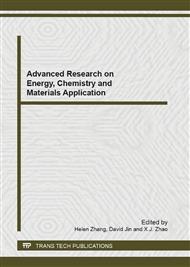p.39
p.46
p.50
p.55
p.60
p.66
p.70
p.74
p.78
The Influence of Rock Pyrolysis Parameters Correction on the Hydrocarbon Expulsion Efficiency — Taking Example of Well Xu11
Abstract:
In the rock pyrolysis experiment, part of the boiling point above 300°C of the high carbon number hydrocarbons and the hydrocarbon generated from pyrolysis of resin and asphaltene detected into S2, resulting in the thermolysis residual hydrocarbon "S1" is smaller than the real value, potential hydrocarbon generation of kerogen "S2" is greater than the real value. Thus using the experimental pyrolysis parameters directly calculate the hydrocarbon expulsion efficiency is greater than the real value. We used the pyrolysis parameters before and after correction, combined with the method of the restoring of original hydrocarbon potential to calculate the hydrocarbon expulsion efficiency of mudstone of Qingshankou l member of well Xu 11 in San Zhao area of Song Liao Basin. The average of the expulsion efficiency before and after the pyrolysis parameters correction are 87.4% and 66.9%. The hydrocarbon expulsion efficiency have a great difference between before and after correction, thus the pyrolysis parameters correction is particularly important in the calculation of hydrocarbon expulsion efficiency.
Info:
Periodical:
Pages:
60-65
Citation:
Online since:
November 2013
Authors:
Price:
Сopyright:
© 2014 Trans Tech Publications Ltd. All Rights Reserved
Share:
Citation:


